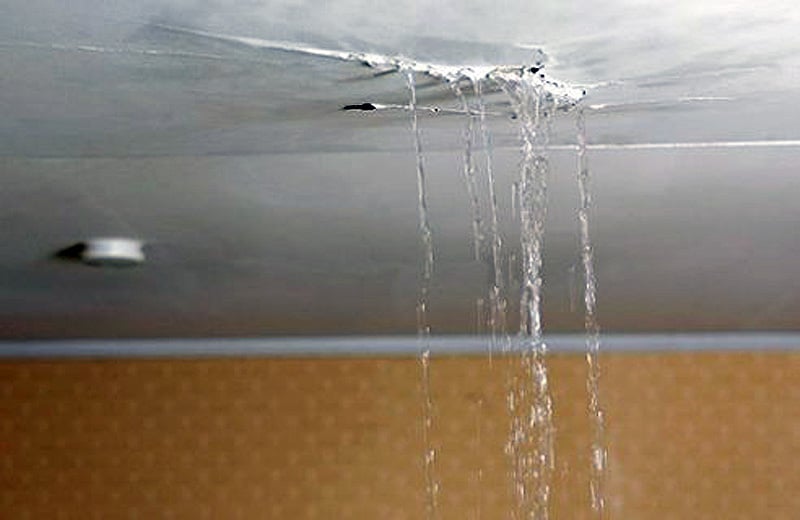Learn About the Six Principal Reasons For Water Leakage at Home
Learn About the Six Principal Reasons For Water Leakage at Home
Blog Article
They are making a few good observations relating to How to Find Water Leaks in general in this great article just below.

Leakages not just trigger waste of water however can likewise create unnecessary damages to your residence and also advertise unwanted organic growth. Water leakages could go unnoticed given that most of the pipework in our house is concealed. By looking and understanding for day-to-day scenarios that create leakages, you can shield your residence from future leakages and unneeded damages. Today, we will take a look at six leak creates that may be causing your pipes to drip.
Trespassing origins
The majority of water leakages start outside the house rather than inside it. If you discover an unexpected decline in water stress, claim in your faucet, require time to head out and also analyze your lawn. You may observe damp patches or sinkholes in your yard, and that might mean that tree origins are attacking water lines creating water to leak out. You can have your plumber check for intrusion, especially if you have trees or hedges near your residential or commercial property.
Corroded water supply
This might be the reason of discoloration or warping on your water pipelines. If our plumbing system is old, consider changing the pipes because they are at a greater risk of rust than the more recent models.
Malfunctioning Pipeline Joints
The point at which your pipes connect is frequently the weakest web link in the waterline. Pipeline joints can weaken in time, resulting in water leakages. Sadly, the majority of pipeline joints are not quickly visible. If you have noisy pipelines that make ticking or banging sounds, particularly when the warm water is activated, your pipe joints are probably under a great deal of pressure. It is advisable to have your plumber check your system once a year.
Immediate temperature modifications.
Extreme temperature adjustments in our pipelines can create them to expand and get all of a sudden. This development and tightening may trigger fractures in the pipes, particularly if the temperature level are listed below cold.
Poor Water Connectors
At times, a leakage can be created by loosened hose pipes and pipelines that supply your devices. In instance of a water links leak, you might observe water running directly from the supply line or puddles around your appliances.
Obstructed Drains
Blocked drains might be bothersome as well as inconveniencing, however they can in some cases end up creating an overflow causing burst pipelines. Maintain getting rid of any products that might go down your drains that can block them to stay clear of such hassles.
All the above are causes of leakages but not all water leakages result from plumbing leaks; some leakages could come from roofing system leakages. All leaks ought to be repaired promptly to stay clear of water damages.
Leaks not just create waste of water yet can likewise create unneeded damage to your residence as well as advertise unwanted natural growth. By looking and recognizing for everyday scenarios that create leaks, you can protect your house from future leakages and unnecessary damages. Today, we will look at 6 leakage creates that might be causing your pipelines to trickle.
At times, a leakage can be triggered by loosened hoses and also pipelines that supply your devices. In situation of a water connections leakage, you may notice water running straight from the supply line or puddles around your devices.
How To Check For Water Leak In Your Home
How To Check for Leaks
The average household's leaks can account for nearly 10,000 gallons of water wasted every year and ten percent of homes have leaks that waste 90 gallons or more per day. Common types of leaks found in the home are worn toilet flappers, dripping faucets, and other leaking valves. These types of leaks are often easy to fix, requiring only a few tools and hardware that can pay for themselves in water savings. Fixing easily corrected household water leaks can save homeowners about 10 percent on their water bills.
To check for leaks in your home, you first need to determine whether you're wasting water and then identify the source of the leak. Here are some tips for finding leaks:
Take a look at your water usage during a colder month, such as January or February. If a family of four exceeds 12,000 gallons per month, there are serious leaks.
Check your water meter before and after a two-hour period when no water is being used. If the meter changes at all, you probably have a leak.
Identify toilet leaks by placing a drop of food coloring in the toilet tank. If any color shows up in the bowl after 10 minutes, you have a leak. (Be sure to flush immediately after the experiment to avoid staining the tank.)
Examine faucet gaskets and pipe fittings for any water on the outside of the pipe to check for surface leaks.
Undetected water leaks can happen without the home or business owner even realizing. If you suspect a water leak, but not able to find the source. It is time to contact a professional water leak detection service, The Leak Doctor.
How To Find a Water Leak In Your Home
https://www.leakdoctor.com/blog/How-To-Check-For-Water-Leak-In-Your-Home_AE197.html

We had been guided to that report on How to detect water leaks in your home from an acquaintance on another domain. Sharing is nice. You just don't know, you could be helping someone out. Thank you so much for going through it.
Connect for clarity. Report this page